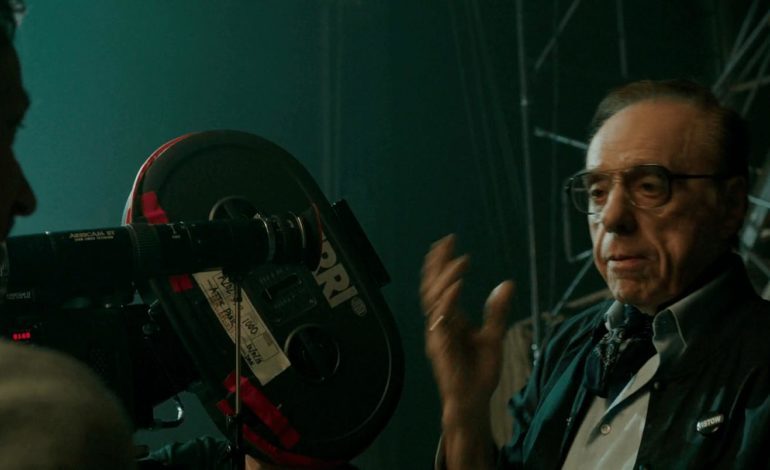

Peter Bogdanovich was a film writer, director, critic, historian, producer, and actor. He passed away from natural causes at his home in Los Angeles at the age of 82. He was born in Kingston, New York, on July 30th, 1939, to Serbian immigrants Herma and Borislav Bogdanovich. He began his career as a film programmer for the Museum of Modern Art in New York City in the early 1960s, also writing on film for Esquire Magazine.
Bogdanovich was strongly influenced by the Cahiers du Cinema critics and French Nouvelle Vague directors François Truffaut, Jean-Luc Godard, Claude Chabrol, and Éric Rohmer. Following their footsteps, he set out to California to become a director. He started working for Roger Corman, who was a fan of his Esquire pieces, directing the crime thriller Targets and science fiction Voyage to the Planet of Prehistoric Women (both 1968) under the pseudonym Derek Thomas.
After a brief return to journalism, Bogdanovich was commissioned by the American Film Institute to direct the documentary tribute Directed by John Ford (1971) about the filmmaker’s life and career. As a true lover of the cinema, Bogdanovich was a longtime fan of John Ford’s work, alongside other classic Hollywood filmmakers like Orson Welles, Howard Hawks, and Allan Dwan.
Bogdanovich’s next film was The Last Picture Show (1971), about a group of high schoolers coming of age in a culturally and economically flailing town as they approach their graduation. To this day, The Last Picture Show remains his most acclaimed work. It was nominated for eight Academy Awards—Best Cinematography, Best Adapted Screenplay, Best Supporting Actress (Ellen Burstyn and Cloris Leachman), Best Supporting Actor (Jeff Bridges and Ben Johnson), Best Director, and Best Picture-winning for Leachman and Johnson’s performances.
His next film (and this author’s personal favorite) was What’s Up, Doc? (1972), in which musicologist Howard Bannister (classic himbo Ryan O’Neal) travels to San Francisco to compete for a research grant while resisting the advances of Judy Maxwell (a luminous Barbra Streisand). Chaos ensues when four identical plaid suitcases get mixed up at the hotel they’re all staying at. The film also marked the film debut of comedy icon Madeline Kahn as Howard’s neurotic fiancée Eunice Burns.
What’s Up, Doc? is modeled after the screwball comedies of the 1930s and 1940s, particularly the Howard Hawks films Bringing Up Baby (1938) and His Girl Friday (1940). As evidenced by the title, the film is also heavily inspired by Bugs Bunny cartoons. The sequence where Howard and Judy flee with all four suitcases through a Chinatown parade, Lombard Street, wet cement, a large panel of glass, and into the San Francisco Bay is a live-action Looney Tunes cartoon and a masterpiece of comedic filmmaking.
Bogdanovich’s classical inspirations are also highly apparent in his most critically panned film, At Long Last Love (1975). His first and only musical film follows the romantic entanglements of four socialites (Burt Reynolds, Cybill Shepherd, Madeline Kahn, and Duilio Del Prete) who switch partners during a party to make each other jealous. Bogdanovich was inspired by the pre-Code musical comedies of Ernst Lubitsch, which included The Love Parade (1929), The Smiling Lieutenant (1931), and One Hour with You (1932). Like those earlier films, all of the songs from At Long Last Love were recorded live on set. This gives the film a spontaneous quality, allowing the comedic skills of the actors to shine through as opposed to the highly polished style of films like An American in Paris (1951) and My Fair Lady (1965).
Not wanting to make another film in black and white after The Last Picture Show and Paper Moon (1973), Bogdanovich worked with production designer Gene Allen and art director John J. Lloyd. They created a “black and white in color” aesthetic that bridged the gap between modern film technologies and classical aesthetics.
In addition to his films, articles, and books, Peter Bogdanovich leaves behind a legacy informed by the filmmakers who came after him. Everyone has cited him as an inspiration, from David Fincher and Quentin Tarantino to Noah Baumbach, Sofia Coppola, and Wes Anderson. Bogdanovich’s reverence for film history never trapped him in the past. Instead, it allowed him to interrogate how we relate to bygone eras and the place they should hold in our collective consciousness. His love for history never faded, with his final work being the documentary The Great Buster: A Celebration (2018), chronicling the life and career of silent comedian Buster Keaton.
Many of Bogdanovich’s films are currently available to stream. Daisy Miller (1974) and The Great Buster: A Celebration is on Kanopy, The Last Picture Show and Targets are on Showtime, Paper Moon is on Amazon Prime, and Noises Off… (1992) is on Hoopla.
